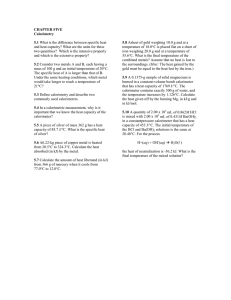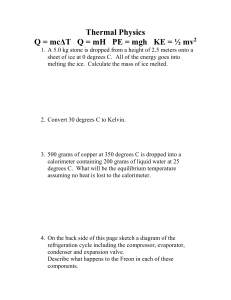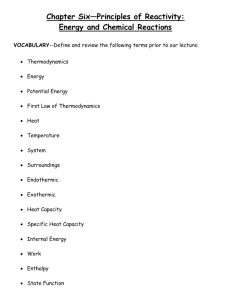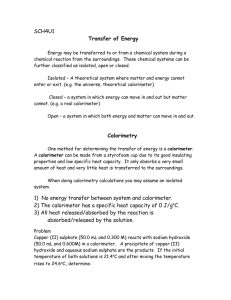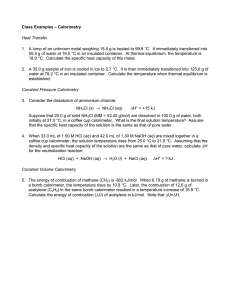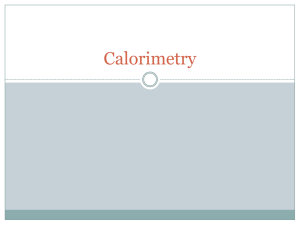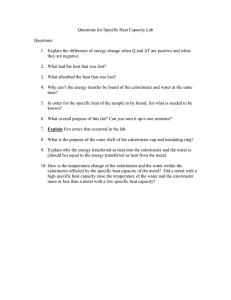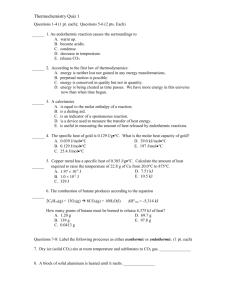Calorimetry Problems
advertisement
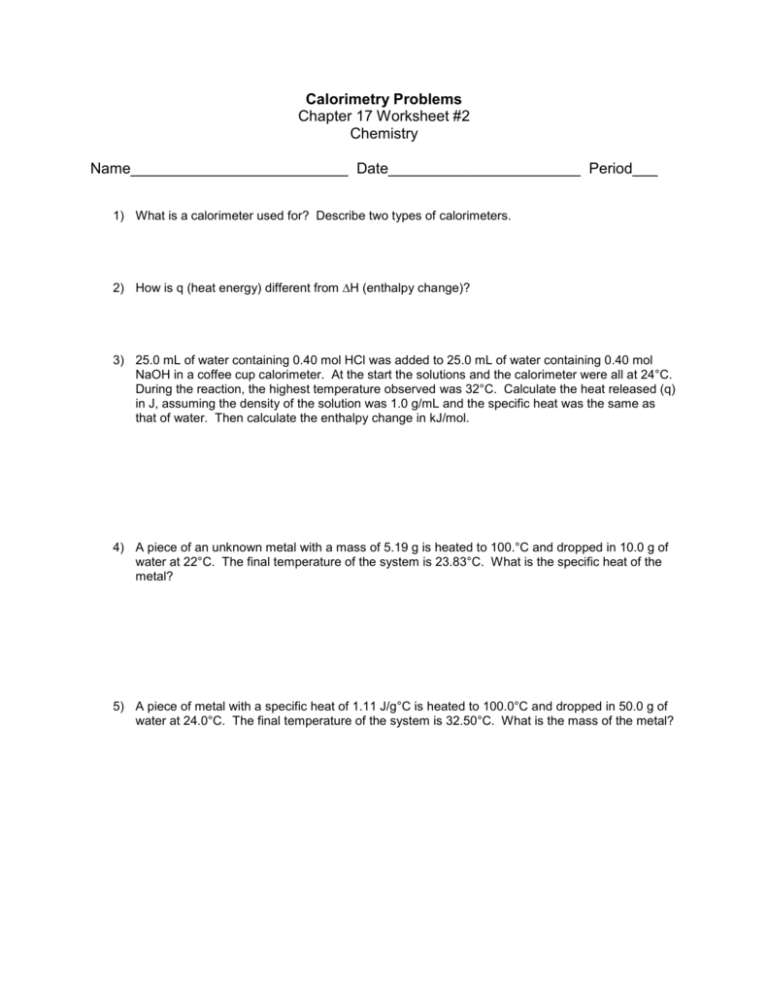
Calorimetry Problems Chapter 17 Worksheet #2 Chemistry Name__________________________ Date_______________________ Period___ 1) What is a calorimeter used for? Describe two types of calorimeters. 2) How is q (heat energy) different from ∆H (enthalpy change)? 3) 25.0 mL of water containing 0.40 mol HCl was added to 25.0 mL of water containing 0.40 mol NaOH in a coffee cup calorimeter. At the start the solutions and the calorimeter were all at 24°C. During the reaction, the highest temperature observed was 32°C. Calculate the heat released (q) in J, assuming the density of the solution was 1.0 g/mL and the specific heat was the same as that of water. Then calculate the enthalpy change in kJ/mol. 4) A piece of an unknown metal with a mass of 5.19 g is heated to 100.°C and dropped in 10.0 g of water at 22°C. The final temperature of the system is 23.83°C. What is the specific heat of the metal? 5) A piece of metal with a specific heat of 1.11 J/g°C is heated to 100.0°C and dropped in 50.0 g of water at 24.0°C. The final temperature of the system is 32.50°C. What is the mass of the metal? CHALLENGE QUESTION 6) If a piece of cadmium (c = .232 J/g°C) with a mass of 37.6 g and a temperature of 100.°C is dropped into 25 g of water at 23°C, what will the final temperature of the system be?
